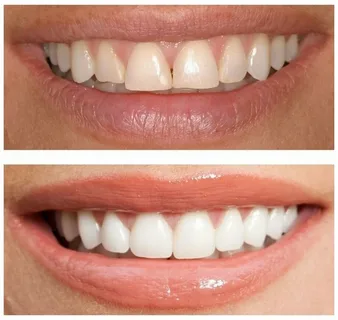Composite bonding is a popular cosmetic dental procedure that can transform your smile with minimal effort. Whether you want to correct chipped teeth, close gaps, or enhance the overall appearance of your teeth, composite bonding offers an affordable and non-invasive solution. In this article, we’ll explore the process of composite bonding before and after, shedding light on its benefits, how it works, and what results you can expect.
What is Composite Bonding?
Composite bonding is a dental technique where a tooth-colored resin material is applied to the surface of your teeth. This procedure is typically used to repair damaged, chipped, or discolored teeth, enhancing their shape and appearance. Unlike more invasive procedures like veneers or crowns, composite bonding is relatively simple and can often be done in one visit.
The Composite Bonding Process
Understanding the composite bonding process before and after treatment can help set your expectations. Here’s a brief look at what happens:
1. Before Composite Bonding
Before composite bonding, the dentist will first assess the condition of your teeth. This is important because the bonding material needs a clean, stable surface to adhere to. Any existing decay or issues like gum disease will need to be addressed prior to the procedure. Once your teeth are prepped, the dentist will choose a shade of resin that matches your natural teeth for a seamless finish.
Read Also: Tummy Tuck Before and After: What to Expect and How It Can Transform Your Life
2. After Composite Bonding
After the procedure, your teeth will look noticeably different, with any chips, gaps, or discoloration corrected. The composite material is polished to give a natural, smooth appearance. Many people experience a dramatic improvement in their smiles, often boosting their confidence.
Benefits of Composite Bonding Before and After
The benefits of composite bonding, before and after treatment, are significant. Here’s what you can expect:
Before:
- Teeth may be chipped, cracked, or discolored.
- Gaps between teeth might affect your confidence.
- Old fillings may make your smile look less uniform.
After:
- A smooth, natural appearance.
- Corrected chips, cracks, and gaps.
- A boost in self-esteem due to your enhanced smile.
How Long Does Composite Bonding Last?
The durability of composite bonding is an important factor to consider. Typically, composite bonding can last anywhere from 5 to 10 years, depending on how well you care for your teeth. Good oral hygiene and avoiding habits like nail-biting or chewing on hard objects can help extend the lifespan of the bonding.

Composite Bonding vs. Other Dental Treatments
It’s helpful to compare composite bonding with other cosmetic dental treatments. Here’s a look at some differences:
- Veneers: Veneers are thin shells of porcelain that cover the front surface of teeth. They are more durable but also more expensive than composite bonding.
- Crowns: Crowns are used for teeth that need more structural support. While stronger, they involve more preparation and are a more permanent solution.
- Teeth Whitening: While teeth whitening can brighten your smile, it won’t fix issues like chips or gaps. Composite bonding provides a more versatile solution.
Composite Bonding Before and After: Real Results
When looking at composite bonding before and after photos, the transformation can be impressive. Many patients report feeling more confident with their smile after the procedure. This simple treatment can make a huge difference, especially if you’re dealing with minor cosmetic imperfections. Seeing real-life examples of composite bonding before and after can help you understand just how effective the treatment can be.
Who is a Good Candidate for Composite Bonding?
Composite bonding is a great option for many people, but it’s important to know if you’re a good candidate. Ideal candidates include those who:
- Have minor chips, cracks, or gaps in their teeth.
- Want to enhance their smile without invasive procedures.
- Are looking for a more affordable option than veneers or crowns.
- Have good oral health overall, without major decay or gum disease.
Aftercare Tips for Maintaining Your Composite Bonding
Once you’ve undergone composite bonding, it’s crucial to maintain good oral hygiene to keep your smile looking its best. Here are some aftercare tips to help you:
- Brush and Floss Daily: Regular brushing and flossing are essential to prevent plaque buildup around the bonding.
- Avoid Hard Foods: Chewing on hard objects like ice or pens can damage the composite material.
- Regular Dental Visits: Routine check-ups help ensure that the bonding remains in good condition.
- Teeth Grinding: If you grind your teeth, your dentist may recommend wearing a mouthguard at night to protect the bonded areas.
Frequently Asked Questions (FAQs) about Composite Bonding Before and After
Q: How long does composite bonding take?
A: The procedure usually takes about 30 to 60 minutes per tooth, depending on the complexity of the case.
Q: Can composite bonding be removed?
A: Yes, composite bonding can be removed and replaced if needed. However, it’s important to have it done by a professional to avoid damaging the natural tooth structure.
composite bonding before and after
Q: Does composite bonding stain like natural teeth?
A: Composite resin can stain over time, especially if you consume dark-colored foods and drinks like coffee, tea, or red wine. Regular cleaning and avoiding staining agents can help maintain the appearance of your bonding.
Q: Is composite bonding painful?
A: No, composite bonding is typically painless and doesn’t require anesthesia. You might feel some mild discomfort during the preparation phase, but it’s a straightforward procedure.

Conclusion: The Transformation of Composite Bonding Before and After
Composite bonding offers a quick, cost-effective, and minimally invasive way to improve your smile. By correcting imperfections such as chips, gaps, and discoloration, this cosmetic procedure can enhance both the appearance and functionality of your teeth. The difference seen in composite bonding before and after treatment is often striking, with patients leaving the dentist’s office with renewed confidence in their smile. Whether you’re considering composite bonding or simply curious about its benefits, the results speak for themselves.



